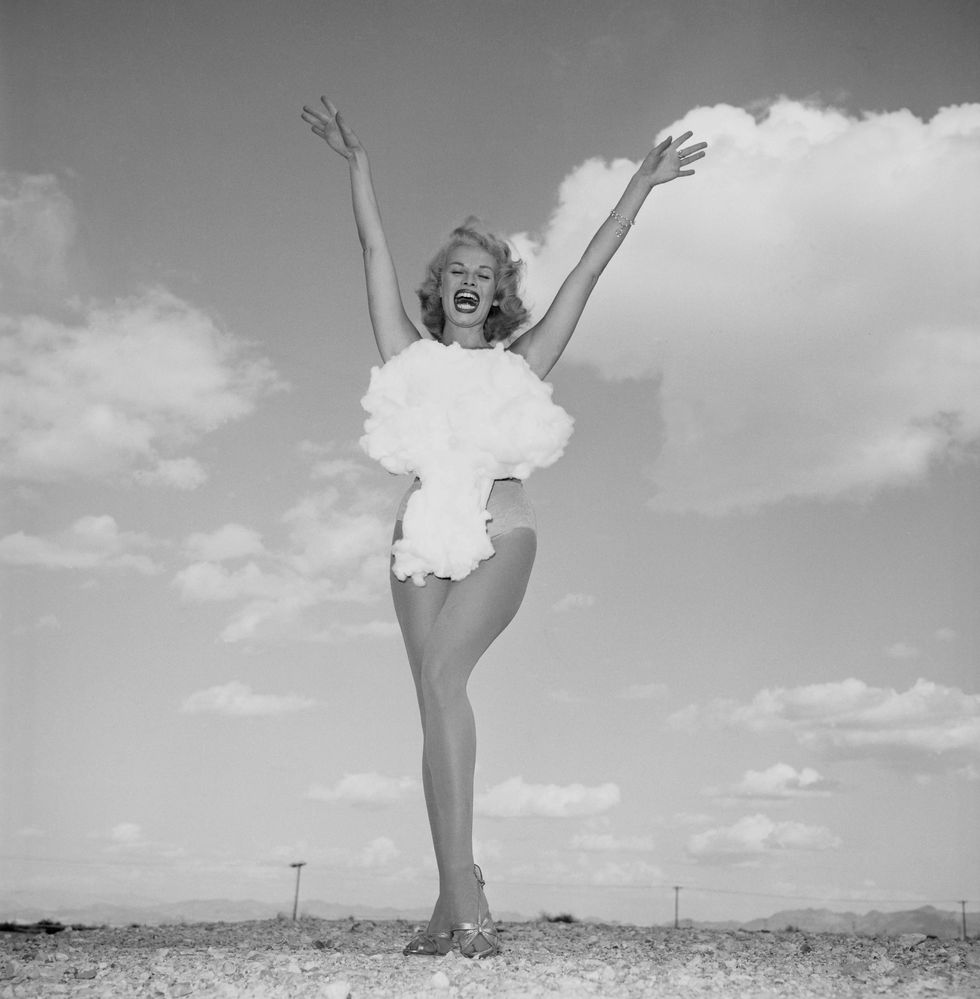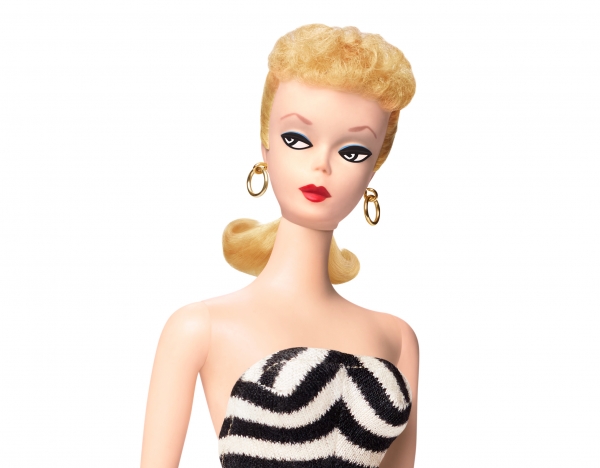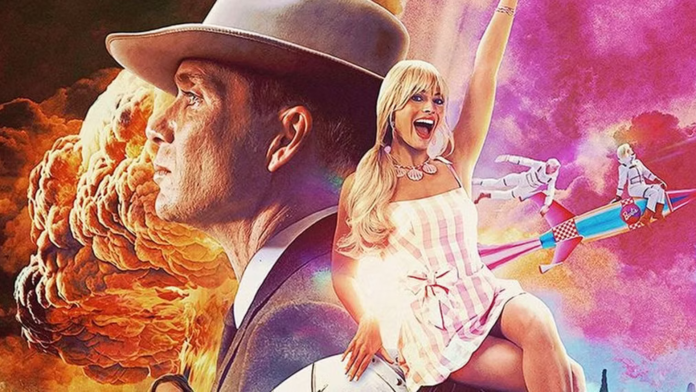While the fascination with Barbie and Oppenheimer as a double bill may have left many scratching their heads, Cerys McKew explains that the two films have commonalities beyond their shared release date.
‘Barbenheimer’ has become a cultural phenomenon ever since it was announced that Barbie and Oppenheimer had the same release date. The films seemingly could not have less in common; Barbie is a fun-loving doll who boogies in a bubblegum pink wonderland, while Oppenheimer is an ambitious nuclear scientist, the self-proclaimed ‘destroyer of worlds’. Barbie has to reckon with a smidge of cellulite and the odd morbid thought, while Oppenheimer has to reckon with his creation of the atomic bomb that devastated Japan and has loomed over the world with its annihilating threat ever since. While Oppenheimer was a genius physicist, a Teen Talk Barbie doll in 1992 complained that “Math class is tough”, much to the dismay of feminists and women in STEM.
But what if we think outside the toy box and consider that Barbie is a blonde bombshell, and that Oppenheimer is the father of the atomic bomb? And that beautiful women have consistently been linked to nuclear weapons in Western popular culture? The sexual power of beautiful white women was often conflated with the power of the bomb, and the original Barbie emulated the appearance of such beauties. The images of these bombshells were used to glamourise the idea of a terrifying creation, just as Barbie’s image is used to sell toys to children and, arguably, feminine ideals to girls and women.

In September 1945, a Hollywood starlet called Linda Christians was disturbingly celebrated as the ‘Anatomic Bomb’ in Life Magazine only a few weeks after the harrowing attack on Hiroshima. Then, in 1946, the bikini swimsuit was born, taking its name from the area where the first public nuclear bomb test took place—the Bikini Atoll. Women looked dangerously hot in skimpy beachwear, the association suggested.
The nuke was made to seem more glamorous again in 1946 when a picture of the gorgeous Rita Hayworth playing Gilda was stuck onto another test bomb. Hayworth was immensely insulted that her image had been used in such a way, but she was not the first or the last woman whose visage was used to vamp up the bomb.
Nuclear fission was still in fashion in ’50s America, when the country was competing with the USSR in the arms race. Las Vegas boomed with atomic tourism because of the Nevada Test Site, while showgirls shimmied for the title of Miss Atomic Bomb. The most memorable Miss Atomic Bomb was the dancer Lee Merlin, who was pictured posing in the desert wearing a cotton mushroom cloud swimsuit and laughing vivaciously, her hands thrown in the air. The image, taken in 1957, doesn’t just provide inappropriate outfit inspiration for an Oppenheimer screening; it exemplifies how sexualised female bodies were used to “sublimate the ‘evil’ power of the bomb for something ‘good’” (Masako Nakamura) in pro-nuke culture.

Barbie made her 1959 debut in a body-conscious swimming costume, making a splash as the perfect, plastic pin-up. Although the doll’s image was never directly conflated with the bomb, she was modelled upon the kind of bombshell women who were. Ruth Handler, Barbie’s inventor, said “little girls dream of being curvaceous, dreamy, exciting, they want—someday—to have gorgeous clothes, be chic, and look like movie stars”, and the first ever Barbie looked every inch a silver screen siren. Just as beautiful women were used to sell the idea of the atom bomb to the American public, Barbie was used to sell more Barbie paraphernalia to young girls (clothes, houses, automobiles, and all the accoutrements of a pink American dream), conditioning them as aspirational consumers.
But was Barbie meant to be a bombshell whose sex appeal sells? Margot Robbie claims no, arguing instead that “people can project sex onto her”, yet the original Barbie’s design was inspired by a risqué German doll, Bild-Lilli, that was marketed exclusively to men. Furthermore, marketing researcher Ernest Dichter advised Mattel that in order to promote the first Barbie to mothers who might worry about the influence a busty, dolled-up doll could have on their child, they should remind them that it is “better [their] daughter[s] should appeal in a sleazy way to a man than be unable to attract one at all.”’

The question of whether Barbie is objectified or empowered is a contentious issue. Analysts provide differing interpretations of her symbolism, “but none can condense the diverse spectrum of contradictory Barbie meanings” (Marlys Pearson and Paul R. Mullins). It is clear, however, that the Mattel team wanted Barbie to have a palatable, PG sex appeal, not the dangerous allure of a femme fatale.
Although Barbie’s designers tried to downplay her sexuality, toy buyers in 1959, almost all of whom were men, were still scandalised by the idea of little girls playing with the ample-bosomed, grown-up dolls instead of traditional baby dolls. According to Ruth Handler, most buyers “wanted nothing to do with her”, believing that girls playing should be imagining themselves as traditionally feminine, nurturing mothers, not single, stylish career women. The reaction to Barbie and her perceived threat expresses male anxieties over gender roles, and the portrayals of femme fatales like Rita Hayworth’s Gilda in post-World War II cinema express the same anxieties, too; as film professor Jack Boozer writes, “ambitious women evoke a certain paranoia that is readily apparent in the metaphorical plots of classic film noir where they are made to appear beautiful but also treacherous”.
Buyers who worried that ambitious, beautiful Barbies might encourage girls to dream about something other than raising their own nuclear families felt this paranoia about changing gender roles, too. Even in 2023, Greta Gerwig’s Barbie has received backlash from paranoid conservatives claiming the film has an ‘anti-man’ feminist agenda. The idea of women as both desirable and threateningly powerful brings us back to the comparison of beautiful women with the bomb. Yet as the American government felt confident that they could control the bomb, the comparison also suggested that these threatening women could be controlled, too—some reassurance for men who feared femme fatales and floozies.
Barbie and Oppenheimer are ostensibly opposite films, with a contrast that has captivated the public imagination. But, as Jacques Derrida wrote in ‘No Apocalypse, Not Now’, “no single instant of our life (of our relation to the world and to being) is not marked today, directly or indirectly, by that [atomic] speed race”. All culture, even the feel-good fantasia of Barbie, is affected by the figurative nuclear fallout. The way Barbie’s beautiful, Hollywood image is used to peddle products and ideas mirrors the way that images of bombshell women were used to peddle nuclear ideology and the catastrophic bomb. The films tell the stories of two very different inventions that irrevocably shaped the 20th century, and both are worth the watch—though you might not be able to see Barbie through the same Barbie Pink-tinted glasses anymore.
Words by Cerys McKew
Support The Indiependent
We’re trying to raise £200 a month to help cover our operational costs. This includes our ‘Writer of the Month’ awards, where we recognise the amazing work produced by our contributor team. If you’ve enjoyed reading our site, we’d really appreciate it if you could donate to The Indiependent. Whether you can give £1 or £10, you’d be making a huge difference to our small team.
